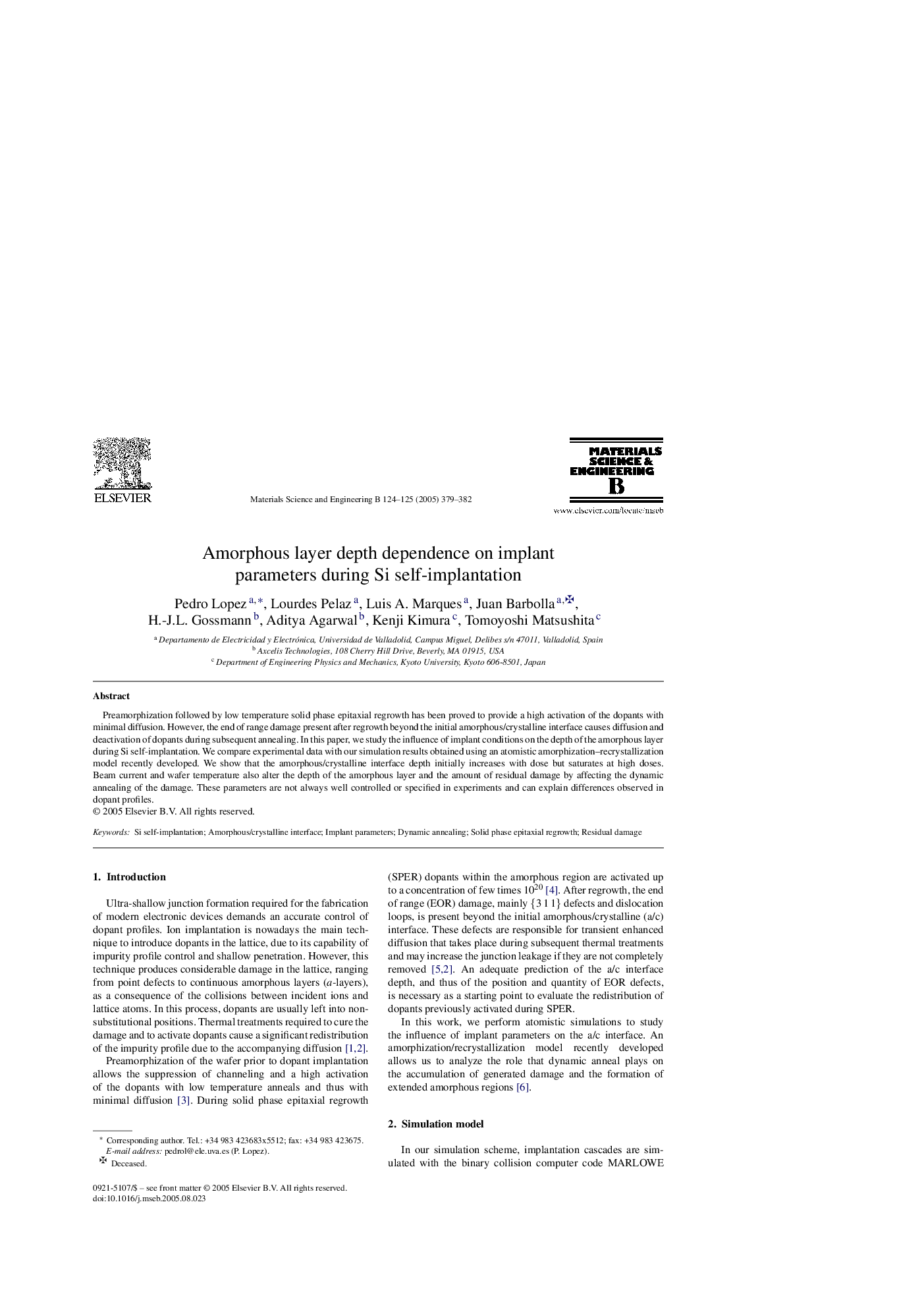| Article ID | Journal | Published Year | Pages | File Type |
|---|---|---|---|---|
| 9783963 | Materials Science and Engineering: B | 2005 | 4 Pages |
Abstract
Preamorphization followed by low temperature solid phase epitaxial regrowth has been proved to provide a high activation of the dopants with minimal diffusion. However, the end of range damage present after regrowth beyond the initial amorphous/crystalline interface causes diffusion and deactivation of dopants during subsequent annealing. In this paper, we study the influence of implant conditions on the depth of the amorphous layer during Si self-implantation. We compare experimental data with our simulation results obtained using an atomistic amorphization-recrystallization model recently developed. We show that the amorphous/crystalline interface depth initially increases with dose but saturates at high doses. Beam current and wafer temperature also alter the depth of the amorphous layer and the amount of residual damage by affecting the dynamic annealing of the damage. These parameters are not always well controlled or specified in experiments and can explain differences observed in dopant profiles.
Related Topics
Physical Sciences and Engineering
Materials Science
Electronic, Optical and Magnetic Materials
Authors
Pedro Lopez, Lourdes Pelaz, Luis A. Marques, Juan Barbolla, H.-J.L. Gossmann, Aditya Agarwal, Kenji Kimura, Tomoyoshi Matsushita,
